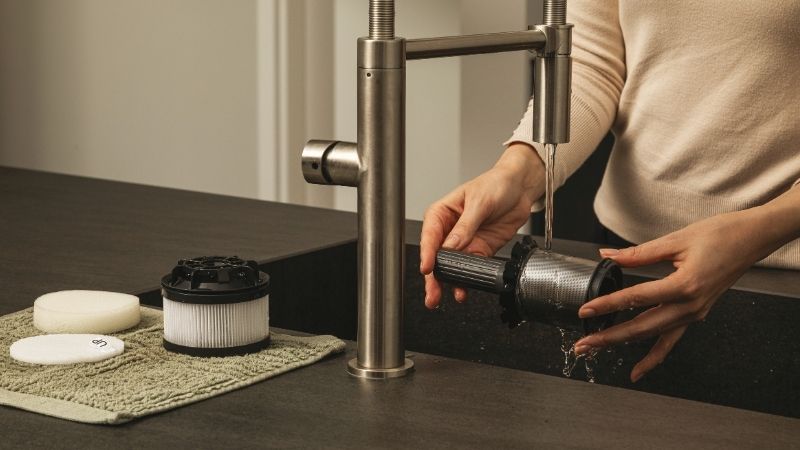When it comes to selecting a hob for your kitchen, the choice can be overwhelming. However, gas and induction hobs frequently rise to the top, each with their own distinct advantages. In this guide, we will show you the specifics of these popular choices, comparing their features to help you make the best decision for your cooking needs.
Understanding Gas and Induction Hobs
Gas and induction hobs work based on unique principles that influence their efficiency, safety, cost, and suitability for various cooking styles. We will delve into each type in detail:
The Classic Gas Hobs
A long-standing favourite in kitchens worldwide, gas hobs are renowned for their swift heat adjustment and visual heat control.
What is a Gas Hob?:
A gas hob uses natural gas or propane as a heat source. The hob directs the gas to the burner, where it's ignited to create a flame. The flame is then used to heat the cookware placed on the hob.
Heat Control:
Instant and tactile control over the required level of heat makes gas hobs a hit among professional chefs.
Cookware Compatibility:
Versatility is key with gas hobs, as they work well with nearly all cookware, including cast iron, stainless steel, and wok-style pans.
Installation:
One limiting factor may be the need for a gas line for installation, which might restrict where you place a gas hob.
Cleaning:
Cleaning gas hobs requires a bit more effort due to the design of the grates and burner, but with regular maintenance, it's a manageable task.
Energy Efficiency:
While gas hobs may not match induction hobs in energy efficiency, they still provide a cost-effective solution, especially in those regions where gas is cheaper than electricity.
Design and Appearance:
Gas hobs give kitchens a traditional look with their raised burners and grate design, appealing to anyone who favours classic aesthetics.
Modern Induction Hobs
Renowned for their modern look and impressive energy efficiency, induction hobs use magnetic fields to heat cookware directly.
What is an Induction Hob?:
An induction hob uses electromagnetism to generate heat. Instead of heating the hob surface, it heats the cookware directly, leading to faster and more precise heating.
Efficiency:
Induction hobs heat up and cool down faster than gas hobs, thus making them more energy-efficient.
Safety:
By only heating the cookware and not the hob surface, induction hobs offer a safer cooking environment, making them ideal for families with children.
Cleaning:
With their flat surfaces, induction hobs are easier to clean than gas hobs, as spills can be quickly wiped off.
Cookware Compatibility:
Induction hobs require magnetic cookware, such as cast iron or magnetic stainless steel.
Design and Appearance:
Induction hobs offer a sleek, modern look, seamlessly fitting into any contemporary kitchen design.
Hoover Hobs: Comparing Gas and Induction Options
Hoover Gas Hob: With its precise heat control and durable cast iron supports, Hoover's traditional gas hob is versatile, handling any cooking styles from a slow simmer to high-heat searing.
Hoover Induction Hob: Hoover's sleek induction hob, known for rapid, even heating, ensures an efficient, safe cooking experience. Its touch controls and easy-to-clean surface boost convenience too.
When choosing between a gas and induction hob, it's crucial to consider your cooking style, kitchen setup, energy efficiency goals, and safety requirements. The Hoover range makes sure that whatever your choice, it will be reliable, durable, and perfectly suited to your needs.
A culinary professional who needs quick, visual heat control may favour a gas hob. On the other hand, a home cook prioritising safety and energy efficiency might opt for an induction hob. The hob you choose can have a big impact on your cooking experience and overall kitchen functionality. Armed with the insights from this guide, the best decision for your home is within reach.



